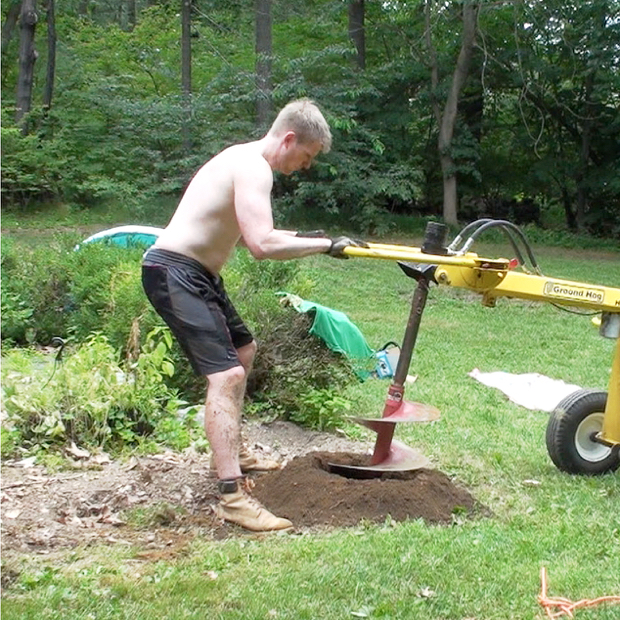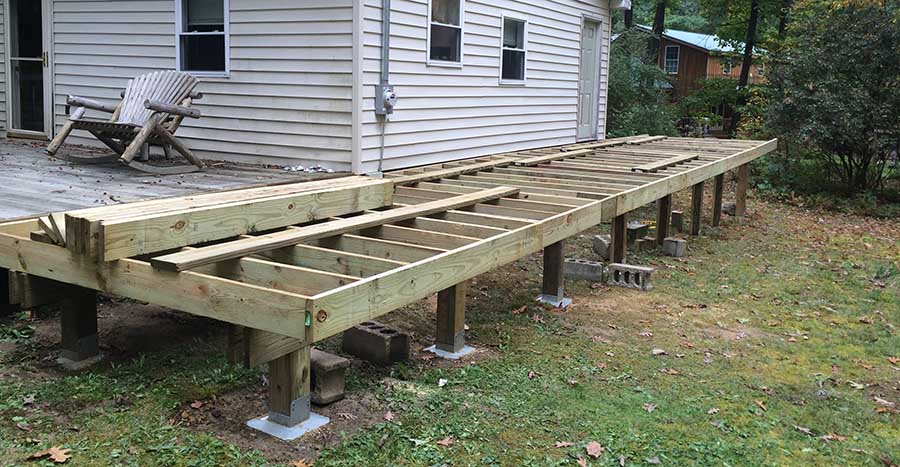Picking the Right Deck Footings for Security and Longevity
The durability and security of your deck depend greatly on the kind of footings you select, as they give the necessary support and security to withstand the examination of time. In this conversation, we will certainly explore the numerous types of deck footings, consider the important elements to consider when making a decision, and delve right into the pros and cons of different choices.
Sorts Of Deck Footings
There are several kinds of deck footings that can be used, each offering one-of-a-kind benefits and factors to consider. One usual sort of ground is the concrete pier ground. These footings consist of a cylindrical opening full of concrete, which gives a solid structure for the deck messages. Concrete pier grounds are reasonably very easy to mount and offer outstanding stability, making them a prominent choice for several deck projects.
These grounds are set up by screwing them into the ground, which creates a secure structure for the deck. They likewise allow for very easy change and leveling of the deck if needed.
Conversely, some building contractors go with precast concrete grounds. These footings are made of sturdy concrete and be available in different shapes and sizes to accommodate various deck designs. Precast concrete grounds are practical to install and provide a secure base for the deck structure.
Ultimately, one more alternative is the post-in-anchor footing system. This sort of ground entails driving a metal anchor into the ground and connecting it to the deck post. It uses flexibility in regards to positioning the deck articles and is suitable for decks with light-weight structures.
When selecting the right kind of deck footing, it is vital to take into consideration elements such as dirt conditions, deck lots, and regional building codes (Deck Footings). Consulting with a specialist specialist or architectural designer can aid make sure the suitable footing is selected for a stable and secure deck
Factors to Think About When Picking Grounds
When selecting the appropriate grounds for a deck, it is essential to meticulously consider different aspects such as soil conditions, deck tons, and adherence to neighborhood structure codes. These elements play a substantial duty in making sure the security and sturdiness of the deck framework.
The kind of dirt on which the deck will be developed determines the type of footings called for. On the other hand, decks constructed on clay or large soils might require grounds that can accommodate the soil's tendency to increase and contract.
Another vital variable is the deck lots. The weight of the deck, including the products utilized and any potential live tons such as furniture or events, must be taken into account when picking footings. The grounds have to be made to bear the weight of the deck and distribute it evenly to avoid any structural issues or failures.
Finally, adherence to neighborhood building ordinance is extremely important. Building ordinance vary from region to region, and it is important to adhere to the particular needs established by the regional authorities. Deck Footings. These codes make sure that the deck is built safely and meets the necessary standards for architectural honesty and load-bearing ability
Concrete Grounds: Disadvantages and pros

Concrete footings provide a number of advantages and downsides when utilized as the structure for a deck. On the favorable side, concrete footings offer excellent stability and sturdiness.
One more advantage of concrete grounds is their flexibility. They can be poured right into different shapes and dimensions to suit various deck styles and arrangements. Concrete footings can be customized to fit the certain requirements and needs of the deck structure.
Nevertheless, there are also some downsides to utilizing concrete footings. This can boost the general price of the deck task and might need expert support.

Helical Piers Vs. Sonotubes: Which Is Better?
In considering the structure choices for a deck, the comparison in between helical piers and sonotubes is important in establishing the superior choice. Helical piers, likewise called screw piles, are steel shafts with helical plates connected to them. They are turned into the ground making use of hydraulic equipment, offering a secure and long lasting structure for his response the deck. On the other hand, sonotubes are cylindrical forms constructed from cardboard or fiber material that are full of concrete. They are put in an opening went into the ground and supply assistance for the deck.
The helical plates on the piers create a strong grip with the dirt, preventing any type of motion or moving of the deck. Sonotubes, on the various other hand, rely entirely on the concrete loading for stability, which might not use the same level of strength and resistance.
In regards to setup, helical piers are relatively much easier and faster to install contrasted to sonotubes. The hydraulic equipment made use of to turn the piers into the ground makes sure a fast and effective process. Sonotubes, on the various other hand, require digging holes and putting concrete, which can be labor-intensive and taxing.
Additionally, helical piers are an even more versatile alternative. They can be used in numerous soil conditions and can be readjusted or strengthened if required. Sonotubes, on the various other hand, might need added support, such as rebar, in particular dirt conditions or locations with high tons needs.
Choosing the Right Footings for Your Deck's Dimensions
For optimal architectural stability, it is vital to meticulously select the ideal grounds that straighten with the measurements of your deck. The dimensions of your deck, including its size, elevation, and size, play a significant role in determining the kind and size of grounds required.
When selecting footings for your deck, it is important to take into consideration the load-bearing capacity of the dirt. The weight of the deck, combined with the weight of any type of furnishings or people on it, exerts a significant pressure on the grounds (Deck Footings). It is critical to select grounds that can properly support this weight without changing or sinking over time.
The size and form of the grounds should additionally be thought about. Bigger decks with greater measurements need larger grounds to supply adequate stability and support. The shape of the grounds, whether they are square or rounded, depends on the style and layout of the deck. Furthermore, the depth at which the footings are set up should be established based on the frost line in your area to protect against any type of heaving or changing because of freezing temperature levels.
Conclusion
In Discover More final thought, choosing the ideal deck grounds is vital for making certain security and longevity. Variables such as the type of grounds, the deck's dimensions, and the pros and disadvantages of different alternatives should be thought about.
These footings consist of a round opening loaded with concrete, which check my reference provides a solid foundation for the deck messages. Concrete pier grounds are reasonably easy to install and use outstanding stability, making them a popular option for several deck projects.
Precast concrete grounds are practical to install and supply a steady base for the deck framework.
It uses flexibility in terms of positioning the deck posts and is ideal for decks with lightweight frameworks.
Concrete grounds supply numerous benefits and negative aspects when utilized as the structure for a deck.